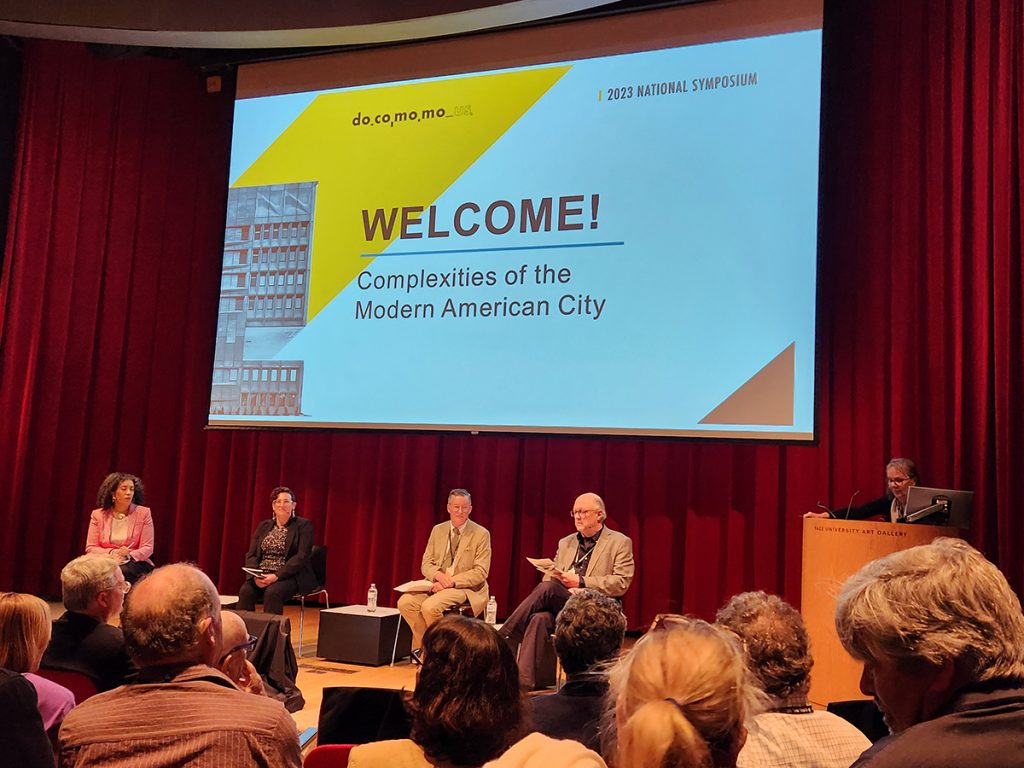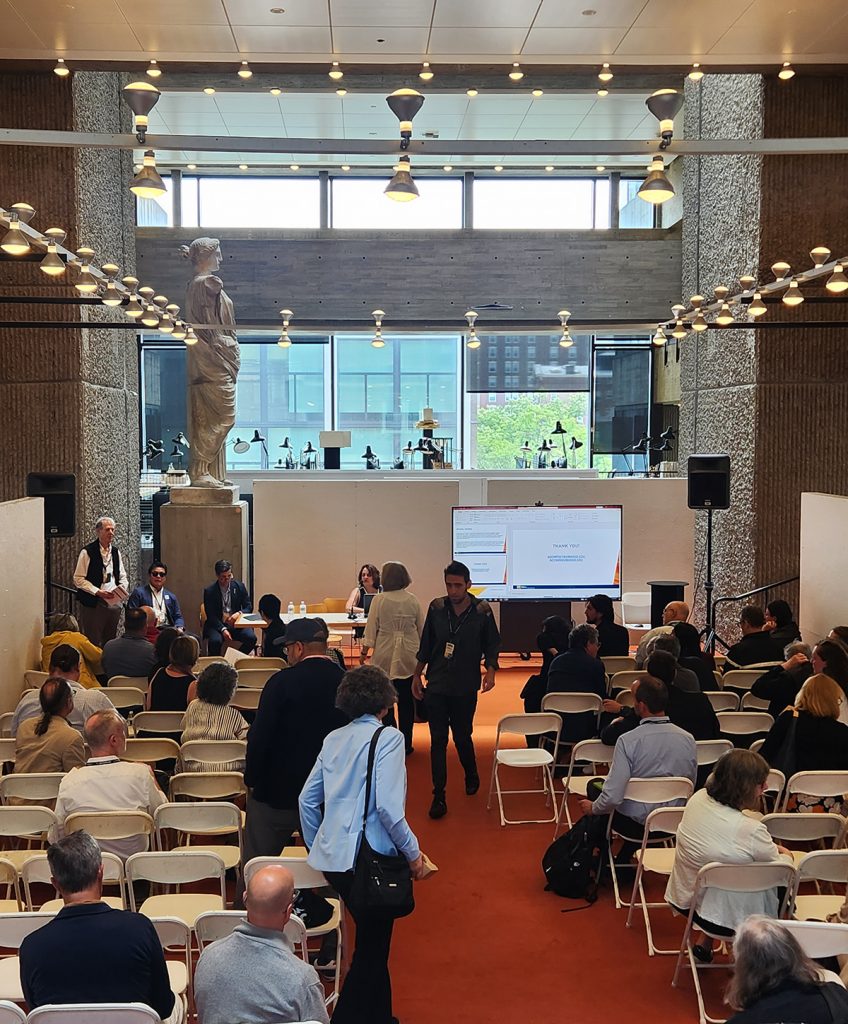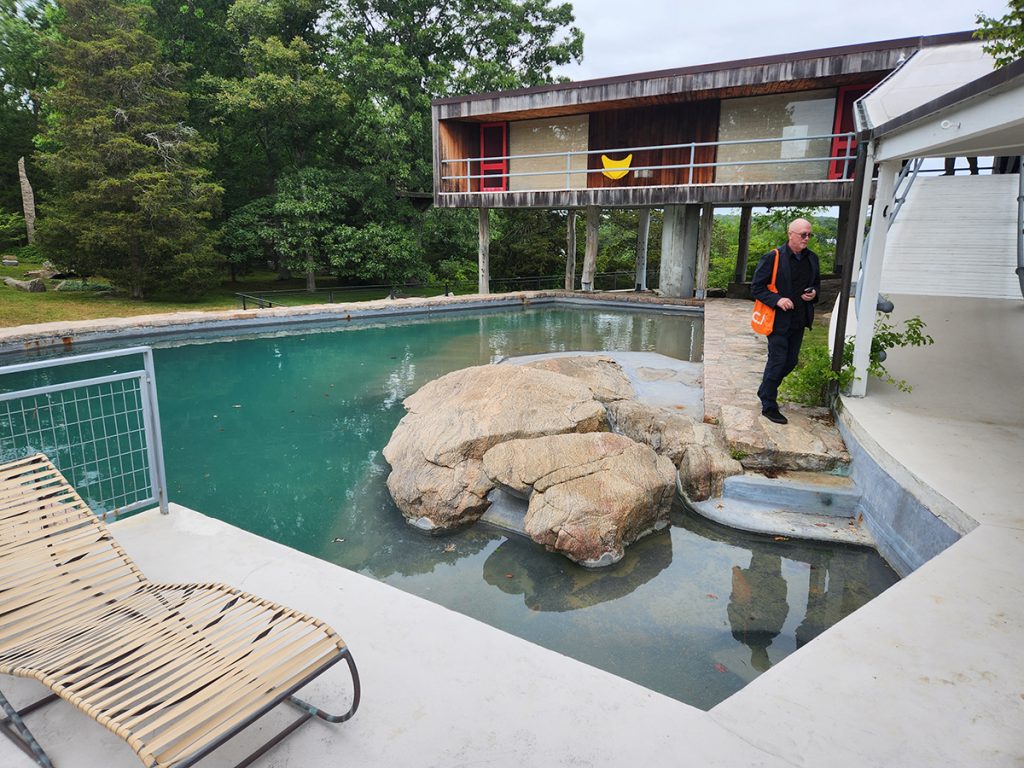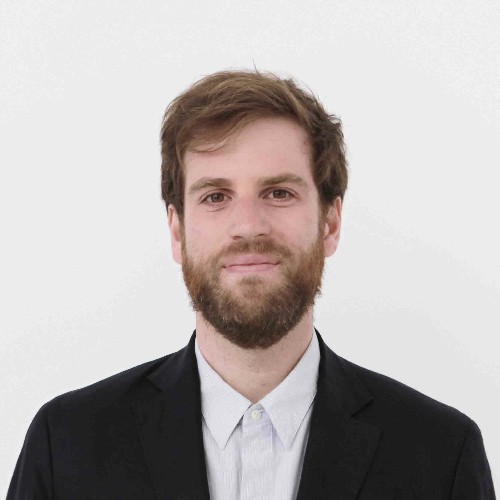News September 2023




Gabriel Hernández, Docomomo US National Symposium Grant Recipient, Shares his Observations Post-symposium
Gabriel Hernández was awarded the DOOCOMOMO US/NY Tri-State Student and Emerging Professional Grant to attend the 2023 Docomomo US National Symposium “Complexities of the Modern American City” held June 21–25 in New Haven, CT.
Hosting the 2023 Docomomo US National Symposium in New Haven reveals several intentions beyond the obvious. Between the 1950s and 1970s, New Haven’s architectural landscape provided a fruitful drawing board for urban and architectural experimentation traced through the combination of Mayor Richard C. Lee’s plans for Urban Renewal and Yale’s commissions to incorporate modern buildings into its collegiate gothic campus.
In this sense, one of the most relevant facts was revealed at the Symposium’s opening reception: New Haven was the US city with the most significant national funding per habitant during the so-called Urban Renewal period. This mecca of urban renewal generated an entirely new set of built environments to serve the aspiration of turning the then 160,000 habitant city, which was losing its industrial and manufacturing power, into a modern hub for the economy. Within this context, how do these projects combine and acknowledge the existing urban tissue, the nine-square grid, and the architectural development aspirations of the time? How successful was urban planning in preserving local communities and providing better living conditions? Which are the success and failures of this?
Significant answers came through the multi-day conference, which provided several case studies and expert points of view through various sessions, architectural tours and informal conversations at receptions. Most importantly, as a researcher on Paul Rudolph’s pedagogies at Yale, I had the opportunity to acknowledge New Haven’s economic and social forces that created the uniquely rich context in which Paul Rudolph practiced. Since Rudolph’s arrival in New Haven from Florida in 1958, not only did he combine his architectural practice with the directorship of the Architecture Department at Yale, he combined public and private commissions.
By no surprise, public commissions included the George Street garage, an ode to the most satisfied agent of the urban renewal— the car—and its nearby Oak Street Connector, which interestingly combines with a public interest in improving living conditions, as seen at Rudolph’s Crawford Manor housing for the elderly. On the private development side, Rudolph’s buildings for Yale University: Arts & Architecture school, Housing for married students, and Greeley Memorial Lab, were all testimony to the age of Yale’s expansion outside the Nine Squares system and all were included within the Conference’s architecture tours program. These buildings must be understood in relationship with other Yale buildings commissioned simultaneously from other state-of-the-art architectural masters, such as Eero Saarinen, Philip Johnson, Kevin Roche, John Dinkeloo, Louis Kahn, and Douglas Orr, amongst many others. Through the architectural tours, attendees had the opportunity to visit a wide range of architectural gems, but most importantly, to discuss them amongst colleagues. Some highlights include the Lower Nine Squares tour and Tony Smith’s house for Fred Olsen.
The sessions comprised an expanded panorama of what architecture, planning and political forces can create when working together. The relevance of specific buildings was discussed at the conference’s first day with (and at) the newly renovated Hotel Marcel, which, although partially cropped, symbolizes an updated interest in the preservation and conservation of Modern movement buildings. In contrast, other Marcel Breuer works struggle to get the same preservation attention. The colleagues of Cape Cod Modern House Trust shared their efforts to preserve the Breuer’s summer House in Wellfleet, MA.
In addition, we were introduced to other relevant figures important to New Haven’s urban fabric, such as the historian Elizabeth Mills Brown and architects Robert & Jean Coolidge, together with the explanation by architect George Knight about ongoing renovations of Kahn’s Yale Centre for British Art. On the second day, the sessions provided a broader view of the modern American context and its relevant figures. I was delighted to discover Antoine Predock’s Luz del Este residential experiment, Texas Vernacular modernism, the Southwest Corridor Transit Project in Boston and several campus buildings, including Rudolph’s University of Massachusetts Dartmouth virtual tour.
Overall, the experience at the Docomomo US National Symposium has been highly inspiring and has provided new perspectives on my ongoing research regarding the American influences that British architects Norman Foster and Richard Rogers were exposed to while studying for the Master’s at Yale under Rudolph’s mentorship. I am incredibly grateful for this opportunity, provided by the generous support of the DOCOMOMO US/NY Tri-State Chapter. At the same time, I have enjoyed meeting such an extraordinary community of architects, historians, preservationists and many others, which provides a more accurate picture of the US context. To cite a few, this richness of the US context were represented, for instance, by the Library of Congress architectural archivist, the Palm Springs Modern Week organizers, the Architecture Sarasota team and patrons, together with many, many others. All of them are new peers who have been very generous with my welcome to the American context, which will surely be one of the highlights of my Fulbright research experience in the US.
— Gabriel Hernández, Universidad Politécnica de Madrid
Gabriel Hernández is a Fulbright Visiting predoctoral fellow at Yale School of Architecture and MIT Architecture. He is an architect and educator with research interests that combine archival research, architectural heritage, and preservation. His PhD research focuses on unpacking the influences that British architect Norman Foster received from the American context during his studies at Yale during the 1961-1962 terms under Paul Rudolph’s directorship of the Architecture Department. He is a PhD Candidate in Architecture and Urbanism at the Architecture School of Madrid ETSAM, at Universidad Politécnica de Madrid. He was previously the Head of Education and Research Units at the Norman Foster Foundation, and a current adjunct faculty of Architectural Analysis at the Architectural Composition Department of UPM Madrid.
——
For this inaugural year, the symposium grants were given in honor of John Morris Dixon, FAIA, renowned editor and writer, who recently stepped down from the New York Tri-State Chapter board after more than two decades of service.